| |

Traditions, folklore, history and more. If it's Irish, it's here. Or will be!
"People will not look forward to posterity who never look backward to their ancestors."
-Edmund Burke




Quotes
Library: Books, Movies, Music
Prints & Photos
Poetry
Jokes


Shops Ireland
Bunús na Gaeilge
(Basic Irish)
Circle of Prayer
Blessings
Did You Know?
Himself/Herself
Write to Us
Readers Write..
Links/Link to Us
Advertise with us
Awards & Testimonials
Submissions Guide

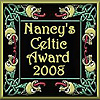
|
|
|
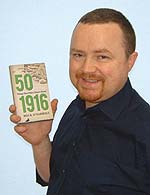 Book Review: 50 things you didn't know about the 1916 uprising by Mick Farrell Book Review: 50 things you didn't know about the 1916 uprising by Mick Farrell
by Bridget Haggerty
The Easter Rebellion saw several names go down in history, but it also threw up some strange and interesting facts. Did you know for example that the Germans bombarded the coast of England in an effort to distract the British from what was happening in Ireland? Or that exams continued to be held in Trinity College even while firing went on outside its windows? Or that both sides issued receipts: the Rebels for food, the British for handcuffs!
The Rising began on April 24th, 1916 and it has been the subject of intense study ever since. From the moment the firing started, people wanted to know what it was all about – why did it start, who was behind it all, what was happening and where? Even as the firing continued, many people were so eager to find out what was going on that they put themselves in harm’s way, sometimes with fatal results. After the Rising, publishers of newspapers, books and souvenir booklets were quick to meet the demand for answers. Newspapers were back on the streets of Dublin as soon as the rebellion was suppressed, with some early copies being rented instead of sold.
Eight months after the Rising had ended, there were at least 15 “complete” accounts and souvenir pictorials available, not to mention numerous in-depth articles and analyses in various periodicals, magazines and newspapers on both sides of the Atlantic. Today, even with nine decades’ worth of published books and articles to consult, it would appear that people are still hungry for information and books such as Mr. Farrell's are bound to help satisfy that hunger, especially as the event is fast approaching its centenary. No matter what your level of knowledge of the Rising, within its pages readers will discover interesting things they might not have known about the rebellion of 1916. Here are a few:
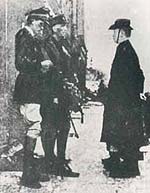 1. From Dublin to Hollywood 1. From Dublin to Hollywood
Did you know that one of the British officers who took the surrender of Padraig Pearse went on to become a famous Hollywood actor, who numbered among his five wives the even more famous Hedy Lamarr?
Maj John Lowe is present in one of the most famous and commonly reproduced photographs taken during the Rising – the moment of Pearse’s surrender as captured on Saturday April 29th. The picture shows Commander of Dublin Forces in Ireland, Brig Gen WHM Lowe, (Maj Lowe’s father) facing a clearly un-humbled Pearse, who is offering his surrender. On Pearse’s right is Elizabeth O’Farrell (a nurse with Cumann na mBan), who carried the subsequent surrender dispatches to rebel commandants. On the left of the photo, to Brig Gen Lowe’s right, is his aide-de-camp and son, Maj John Lowe.
Pearse subsequently surrendered unconditionally, and Maj Lowe escorted him to Kilmainham Jail. John Lowe’s army service didn’t end in Ireland; he served in Gallipoli, Egypt and the Somme before being taken prisoner by the Germans in 1918. When the war ended, Lowe tried his hand at acting in the German film industry – thereby starting down a career path which would eventually lead him to change his name in order to keep his acting career quiet from his disapproving father. So John Lowe became John Loder, eventually moving to Hollywood, California, where he gained fame in movies and on stage and TV.
2.The World's First Radio Broadcast
Did you know that the rebels were responsible for the world’s first-ever radio broadcast?
In 1916 wireless communication was in its infancy and, in general, signals were targeted to particular receiving stations. The idea that a signal might be just broadcast into the atmosphere in the hopes that someone might pick it up was a fairly radical one. On Easter Monday, however, rebel leader Joseph Mary Plunkett sent seven men from the GPO across O’Connell Street to occupy the Dublin Wireless School of Telegraphy. The school had been shut down and sealed by the authorities at the start of the war, and the equipment was dismantled. By Tuesday morning, however, the rebels managed to get a damaged transmitter working, and they began to send out messages in morse code:
“Irish Republic declared in Dublin today. Irish troops have captured city and are in full possession. Enemy cannot move in city. The whole country rising.” From then until the building had to be abandoned under machine-gun and sniper fire the next day, the message was broadcast at regular intervals. This is widely accepted as being the world’s first radio broadcast and, although it was indeed intercepted by several receivers, the rebels never knew if their message was being picked up because they couldn’t get any receiving equipment to work.
3. Dublin Mean Time vs Greenwich Mean Time
Did you know that Dublin and London were in different time zones in 1916?
From 1880 until 1916, Ireland and Britain maintained different time zones – Britain of course followed Greenwich Mean Time (GMT), but Ireland followed Dublin Mean Time (DMT), which was precisely 25 minutes behind GMT. The Statutes (Definition of Time) Act, 1880, which legally defined the difference between GMT and DMT, was superseded by the Time (Ireland) Act, 1916, which was “An Act to assimilate the time adopted for use in Ireland to that adopted for use in Great Britain”. In other words, DMT was abolished. This change came into effect on October 1st, 1916. However, the Rising began four months earlier on April 24th, at approximately 12 o’clock – Dublin Mean Time. Therefore, when modern commemorations of 1916 begin at midday outside the GPO, they’re actually 25 minutes early.
4. The First Shot of the Rising - in Laois!
Did you know that the first shot of the rebellion was fired in Laois? Unsurprisingly, the first shot of the Rising has more than one claimant. One claim that has many supporters is that the first shots came from the Volunteers of Laois, who destroyed a section of railway track at a place called Colt Wood on the night of April 23rd – the day before the Rising began in Dublin. A monument to the event was erected near Colt Wood in 1996, in an area called Clonadadoran on the N8 between Portlaoise and Abbeyleix. The monument bears three plaques: a copy of the proclamation; a picture of a derailed train; and a dedication which names the Volunteers and reads: “On Easter Sunday night, 23rd April, 1916, acting under the direct orders of Patrick Pearse, the Laois Volunteers participated in the demolition of a section of the Abbeyleix-Portlaoise railway line at a location near here. The purpose of this exercise was to prevent British military reinforcements from reaching Dublin via Waterford after the Rising had started. This demolition was followed by the firing of the first shot of the 1916 Rising.” Other activities engaged in by the Laois Volunteers included an attempted similar demolition of the Carlow-Kildare railway line and a raid on the Wolfhill RIC Barracks.
5. Today's Rebels - Yesterday's Olympians
Did you know that two of the rebels were Olympic cyclists?
Bicycles featured largely as a means of transport on both sides during the rebellion. On the rebel side, however, two cyclists who took part in skirmishing were of more than average ability. The ironically-named Walker brothers, Michael and John, had both competed for Ireland on the Olympic cycling team in Stockholm in 1912 (Britain was permitted to have each “home nation” compete separately, and so teams from England, Scotland and Ireland entered). Their event was the 200-mile road race, which began at two in the morning. The Irish were the only team who not only had no spare bicycles, but didn’t even have any spare wheels. As a team, the Irish ranked 11th and, individually, Mick finished 68th and John was in 81st place. During the rebellion, Mick Walker also acted as a courier, and, being a familiar sight on his bicycle on the streets of Dublin, he successfully delivered many dispatches without challenge.
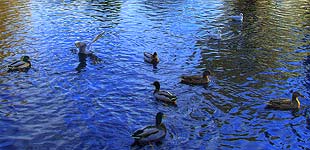 6. A Ceasefire for Ducks 6. A Ceasefire for Ducks
Did you know that firing stopped around St Stephen’s Green to allow the park’s ducks to be fed?
One of the first acts by the Irish Citizen Army in the Rising was to occupy St Stephen’s Green. However, with so many large buildings overlooking the Green (including the Shelbourne Hotel) and not enough men to occupy a useful number of them, the rebels’ position rapidly become untenable. British forces, particularly from the Shelbourne, swept the Green with gunfire, and the rebels were forced to withdraw to the College of Surgeons. Nevertheless, things weren’t so bad for the park’s feathered inhabitants. The Times History of the War recorded that St Stephen’s Green “was well stocked with waterfowl, and the keeper, who remained inside all the time, reported that his charges were well looked after and fed by him, and were very little perturbed by the bullets flying over their heads”. The park-keeper’s name was James Kearney – every day he would enter the Green to feed the ducks, and every day the opposing sides would cease firing to allow him to do so.
In addition, the book also features excerpts from a previously unpublished diary, written by a member of the Jacob's garrison; the story of how rebel communications (being sent in a tin can from rooftop to rooftop) were interrupted by a British crackshot sniper and many other remarkable facts. "50 Things You Didn't Know About 1916" is a treasure trove of trivia and information that will appeal to both the avid student of 1916 and the casual reader.
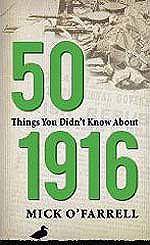 About the author: About the author:
Mick O'Farrell was born in Dublin in 1966, the year of the 50th anniversary of the Easter Rising, one of the reasons for his abiding interest in the subject. He has been collecting information on the history of the event for over twenty years and this is his second book on the subject. His first was "A Walk Through Rebel Dublin, 1916" which has received high acclaim, even by Dubs - high praise, indeed.
Available in the UK, please click Amazon UK
Available on Amazon US. You can order it here: Amazon US
Photo Credits & Captions:
The Surrender: BBC
The President of the Provisional Government, Patrick Pearse, surrendering to General Lowe on Saturday afternoon, 29th April 1916. Also in the photograph is General Lowe’s son John (in the white breeches) who escorted Pearse to Kilmainham Gaol and hidden by Pearse is nurse Elizabeth O’Farrell who accompanied Pearse to meet General Lowe at the top of Moore Street.
Feeding The Ducks: Project Visual
|
|
Fri, Sep 27, 2024
 The Galway Hooker The Galway Hooker
This unique vessel, with its distinctive curved lines and bright red sails, originated in the village of Claddagh. During the 19th century, hookers supported a significant fishing industry and also carried goods, livestock and fuel. Seán Rainey is remembered for building the last of the original boats, the Truelight, for Martin Oliver who was to become the last king of the Claddagh; as king, he was entitled to white sails on his boat. Since the mid seventies, many of the old sailing craft which were on the verge of extinction have been lovingly restored and new ones have been built. During the summer months they can be seen at festivals such a Cruinniú na mBád - the Gathering of the Boats - in Kinvara.
Click for More Culture Corner.
|
|




 The Galway Hooker
The Galway Hooker